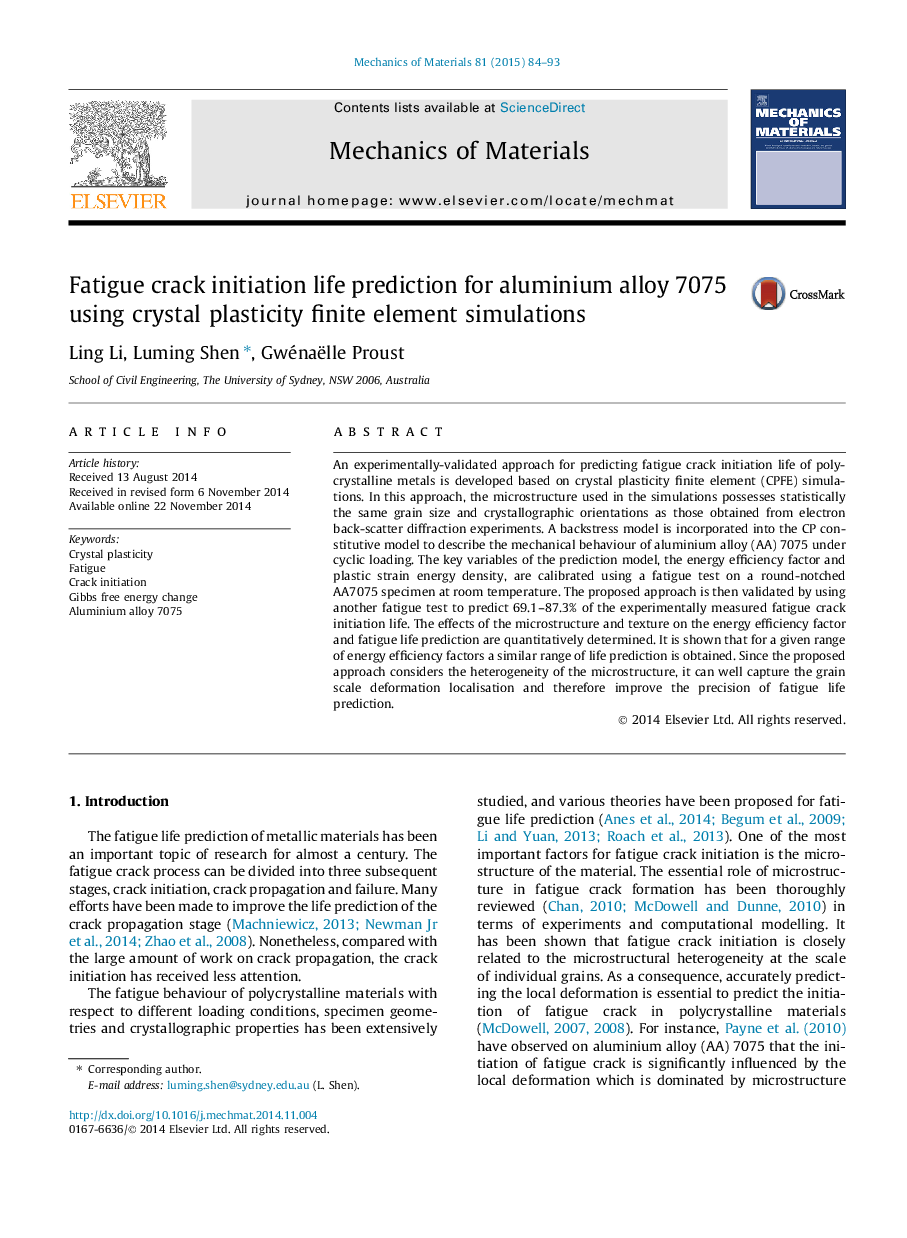| Article ID | Journal | Published Year | Pages | File Type |
|---|---|---|---|---|
| 802745 | Mechanics of Materials | 2015 | 10 Pages |
•A new approach for predicting fatigue crack initiation is proposed.•Energy efficiency factor and plastic strain energy density are key variables.•The approach is experimentally validated.•The effects of microstructure and texture on fatigue life are studied using CPFE.
An experimentally-validated approach for predicting fatigue crack initiation life of polycrystalline metals is developed based on crystal plasticity finite element (CPFE) simulations. In this approach, the microstructure used in the simulations possesses statistically the same grain size and crystallographic orientations as those obtained from electron back-scatter diffraction experiments. A backstress model is incorporated into the CP constitutive model to describe the mechanical behaviour of aluminium alloy (AA) 7075 under cyclic loading. The key variables of the prediction model, the energy efficiency factor and plastic strain energy density, are calibrated using a fatigue test on a round-notched AA7075 specimen at room temperature. The proposed approach is then validated by using another fatigue test to predict 69.1–87.3% of the experimentally measured fatigue crack initiation life. The effects of the microstructure and texture on the energy efficiency factor and fatigue life prediction are quantitatively determined. It is shown that for a given range of energy efficiency factors a similar range of life prediction is obtained. Since the proposed approach considers the heterogeneity of the microstructure, it can well capture the grain scale deformation localisation and therefore improve the precision of fatigue life prediction.
